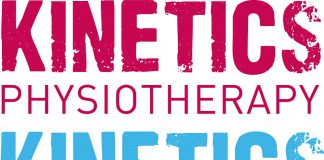This month we are lucky to have some expert advice from Swim School Manager Rachael Jones, who has over 30 years of swimming and swim teaching experience under her belt. Here are the technique tips, stretches and drills Rachael recommends to master the most common and fastest stroke.
A constant kick is important no matter what style of freestyle you swim. A strong, continuous kick is critical, especially if you pause your extended arm out in front when you swim. Something has to be moving your body forward, otherwise you are going to come to a complete stop. It’s important not to have a weak kick, especially if you see yourself wanting to be a successful sprint freestyler.
Some swimmers use their kick to balance their body position in the water. To do this, the swimmer often separates their knees, does a big kick, and hesitates while they breathe. What the swimmer should be doing to maintain good body position is keeping the kick small, constant, and continuous. This will drive the body forward instead of using the kick to stay afloat while going for a breath. The swimmer should try to keep their legs moving all the way through the stroke cycle and use a six-beat kick. This means taking six kicks for every stroke cycle, or three for each arm stroke.
Kicking is something that every swimmer should work on. If you’re not naturally flexible, this can make it difficult. To improve, you will need to stretch regularly and really work on your ankle and foot flexibility. One simple stretch that tends to really help is flexing your foot so your toes are pointed, then bringing it back. This is something that every swimmer can practice. If you weren’t given the gift of flexibility, it’s just one of those things you need to work on, because it’s going to make you faster. You just have to do it.
Another thing you can do is focus on your hip flexors rather than the quads and lower part of your thigh. Obviously, you are already going to be using your quads and lower thigh muscles because they’re a major muscle group used in your kick. However, if you think about the hip flexors, this is going to make your kick smaller, tighter, and faster. If you think about the quads, it’s going to make the kick big.
You should focus on your hip flexors as this is where the kick starts, as opposed to starting from the quads, which would make you kick too much from the knees. You get power out of your quads because they’re one of the biggest muscle groups in your body, whereas your hip flexors are smaller. Think of the kick as starting from the hip flexors – this will give you a much faster and more efficient kick.
One method is to train how you swim in the pool – with your whole body moving, rolling and everything working together, as opposed to doing each part separately. When you work on your kick, mix it up by using a kick board or simply just swimming freestyle with a focus on your legs. However, if you prefer to swim drills, then here are a couple of ideas:
- Kick on your side with one arm out in front and one arm by your side. Focus on keeping everything tight and keeping your body in streamline. If you keep a constant kick, you’ll keep your balance and won’t need to use the hand to skull out in front.
- Six Kick Slide is another great drill. This is a rotation-type kick drill. Take six kicks on one side, take a stroke, then do another 6 kicks on the other side. This is great drill for helping you develop a constant, continuous kick. It’s also a great drill for learning to connect your catch to your core.
I hope these pointers will help with your freestyle kick, which I know from personal experience, can be the older swimmer’s dilemma. Happy swimming and Merry Christmas everyone!
If there are any technique tips you’d like us to tackle, let us know by emailing [email protected]




































